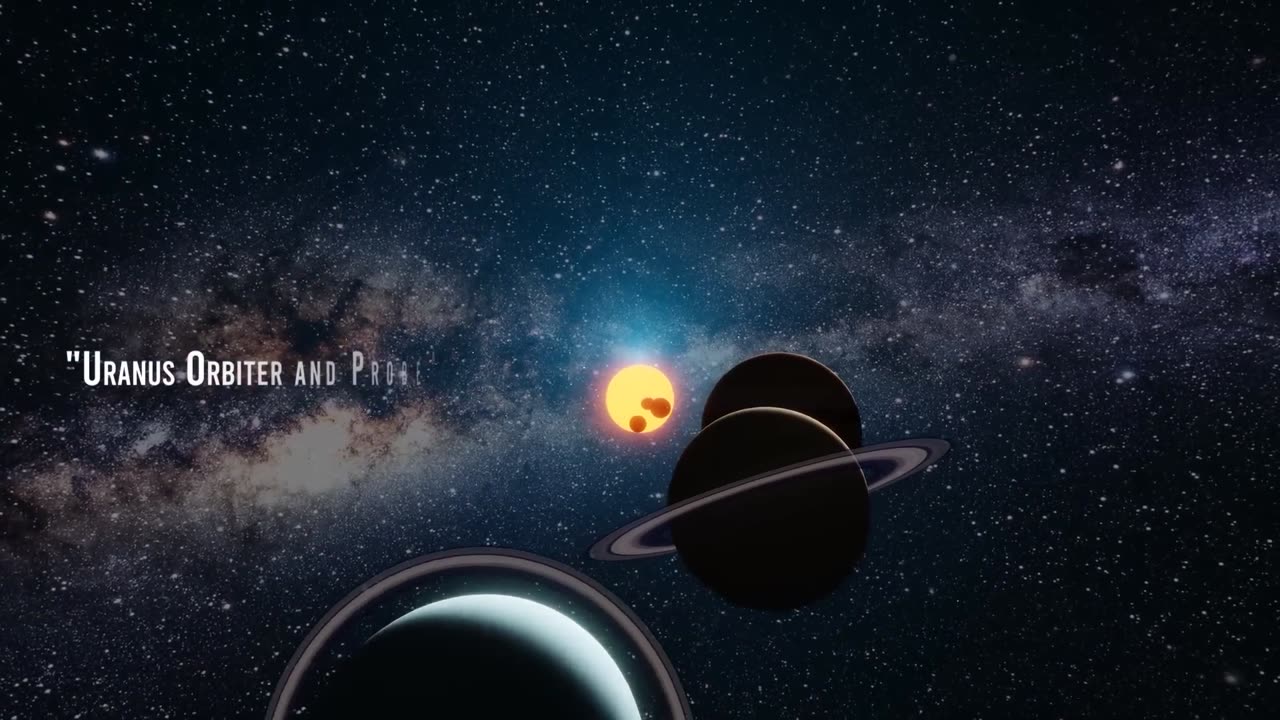Premium Only Content

How Long Would It Take Us To Go To Jupiter, Saturn And Uranus?
How long would it take to reach Jupiter?
Jupiter, the largest planet in our solar system, often gets overlooked in discussions. In this video, we aim to address the question of how long it would take to travel to Jupiter. The answer to this question depends on several factors, such as the distance to Jupiter, the chosen trajectory, the spacecraft's speed, and who is embarking on this journey. Let's delve into these factors one by one to understand the duration required for a voyage to the solar system's largest planet.
Jupiter boasts several fascinating features, including colossal anti-cyclonic storms and an immensely powerful magnetosphere, making it a captivating destination. While Saturn's beautiful rings may be more enticing to some, Jupiter offers its own attractions, such as its icy moons, which we will explore further in this video. From a cost-benefit perspective, Jupiter could prove to be a more practical choice if one were to venture beyond Earth for any reason.
How long would it take to go to Saturn?
Since Galileo first pointed his telescope toward Saturn in 1610, it has remained an alluring celestial object for exploration. Over the centuries, scientists have acquired substantial knowledge about our solar system and the universe. Nevertheless, our current technological limitations have restricted our abilities. However, humanity is on the brink of surpassing these limitations. One such limitation is interstellar travel. Despite having dispatched numerous spacecraft to various locations within our solar system and even beyond it, sending humans remains a formidable challenge. If we were to contemplate an expedition to Saturn in the future, how much time would such a journey require?
Saturn, renowned for its stunning rings, is one of the most visually distinctive planets in our solar system. It often appears as a hazy yellow orb in the night sky, offering a sense of proximity when observed with binoculars or telescopes. To embark on a journey to Saturn, we must first grasp the true extent of its distance. Would it be an extensive voyage to reach the Ringed Planet?
How long would it take to reach Uranus?
High above us, shrouded in darkness, lie the colossal blue giants: Uranus and Neptune. These planets dwarf Earth, Mars, and Venus in size but remain so distant that they elude the naked eye's gaze. Our encounters with them have been scarce, with Voyager 2 passing by in 1986 and 1989 before venturing into interstellar space. While numerous probes have explored other planets in our solar system, the blue giants have largely been sidelined, despite holding the key to understanding the origins of our solar system and those of other stars.
In conclusion, the journey to Uranus and Neptune, though intriguing, remains a challenging prospect due to their immense distance and the complexity of deep space exploration.
-
 18:39
18:39
Stephen Gardner
4 hours ago🔥BREAKING! Trump's SHOCKING New Demand | Biden admits DOJ TARGETED Trump Illegally!
27.3K138 -
 1:20:23
1:20:23
Josh Pate's College Football Show
10 hours ago $8.32 earnedCFP Prediction Special: OhioSt vs Oregon | UGA vs Notre Dame | Texas vs ASU | Boise vs PennSt
54.1K2 -
 7:50:03
7:50:03
Scottish Viking Gaming
8 hours ago💚Rumble :|: SUNDAY FUNDAY :|: Virginia has two Verginers, Change my Mind!
67.3K13 -
 1:49:50
1:49:50
Winston Marshall
2 days agoThe DARK Reality of Socialism - Historian Giles Udy
57.7K74 -
 1:09:28
1:09:28
Sports Wars
7 hours agoBengals STAY ALIVE In OT Thriller, ESPN's Ryan Clark SLAMMED, NFL DESTROYS NBA On Christmas
49K5 -
 9:37
9:37
EvenOut
1 day ago $4.21 earnedThe Non-Reflecting Mirror Scare Twin Prank!
43.3K4 -
 11:19
11:19
Tundra Tactical
23 hours ago $5.99 earnedI Saw How CMMG Makes Guns.
56.3K7 -
 15:34
15:34
Misha Petrov
19 hours agoReacting To TikTok’s Most DELUSIONAL Takes!
72.3K58 -
 1:52:24
1:52:24
Squaring The Circle, A Randall Carlson Podcast
1 day ago#032 Flournoy Holmes' Artwork Helped Define The Southern Rock Phenomenon of The Early 1970's
50.5K6 -
 19:56
19:56
inspirePlay
1 day ago $0.90 earnedWalking with Lions & Facing Africa’s Wild Side | Safari Adventure with the Grid Championship Crew!
33.4K1